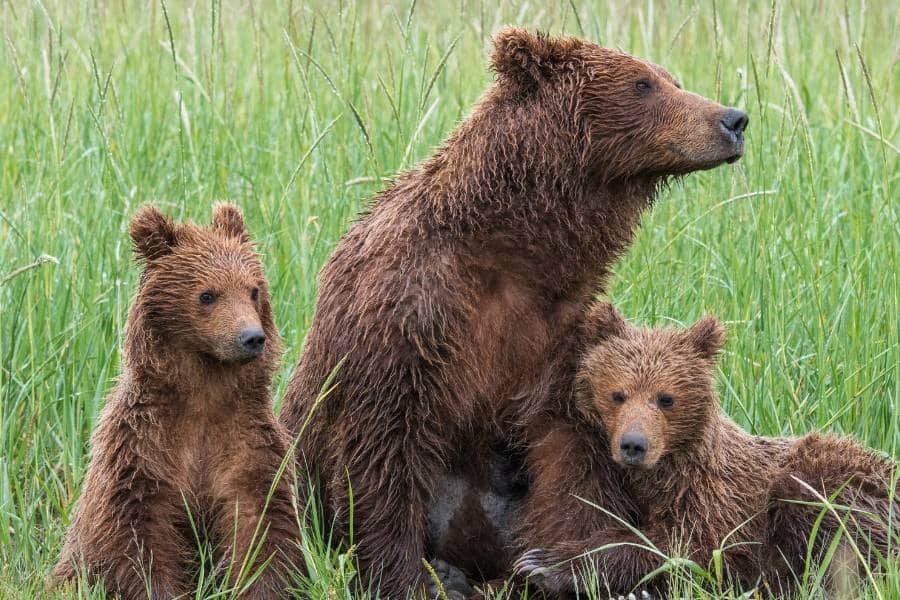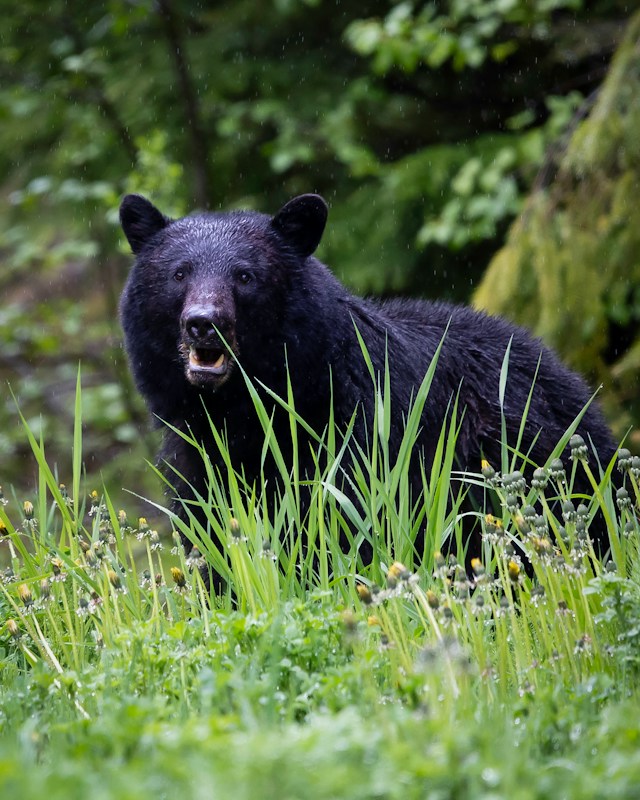
Wandering the wilds of Montana, you’re stepping into a realm where nature holds sway, with its magnificent landscapes and the thrill of possibly crossing paths with bears. Drawing from my troves of adventures, I’ve pieced together insights to guide you through these bear territories safely. It’s about embracing the grandeur of the outdoors while ensuring your journey remains unforgettable and safe. With each step, you’re not just hiking; you’re becoming part of the wilderness, equipped with the know-how to share these spaces respectfully with its wild inhabitants.
When embarking on adventures in Bear Country, safety, respect for wildlife, and preparation are paramount. Here are the crucial points to remember:

Bears, often misunderstood, are an integral part of the ecosystem. Encountering one while hiking isn’t just about the adrenaline rush; it’s a privilege that comes with responsibilities. Being in the presence of such a powerful creature is a reminder of the wildness and beauty of nature, yet it presents challenges. You must know how to act responsibly to ensure your safety and that of the bear.
Mental preparation is vital to enjoying a hike in Bear Country. Familiarize yourself with the types of bears you might encounter, understand their behavior, and learn the do’s and don’ts. It’s about respecting the bear’s space and being aware of your actions.
| Essential Items | Description |
| Bear Spray | A must-have for deterring bears in case of an encounter. Ensure it’s EPA-approved and know how to use it properly. |
| Bear-Resistant Food Containers | store all your food, trash, and scented items securely, reducing the chance of attracting bears to your campsite. |
| Noise-Making Devices | Bells or a whistle can help make your presence known to bears from a distance to avoid surprise encounters. |
| Leash for Dogs | Keeps your dog close and under control, reducing the risk of wildlife encounters or your dog running off. |
| First Aid Kit | For treating any injuries that might occur during your hike or encounter. |
| Map and Compass/GPS | To navigate the area safely without getting lost, especially on remote or poorly marked trails. |
| Flashlight or Headlamp | For visibility in low-light conditions, ensuring you can see and be seen. |
| Water and Filtration System | To stay hydrated without relying on potentially contaminated water sources. |
| Extra Food and Clothing | In case your trip takes longer than expected, ensure you stay nourished and warm. |
| Emergency Shelter | A lightweight tent or bivy sack can be a lifesaver if you’re caught out overnight unexpectedly. |
Identifying areas where bears are likely to be found is the first step in preparing for a hike in their territory. Understanding their habitat helps in avoiding unintentional encounters and maintaining a safe distance.
Bears are often found in areas rich in natural food sources like berries, nuts, and fish. Dense forests, river valleys, and mountainous regions are typical bear habitats. Knowing these areas helps in planning your hiking route more safely.
Bears have different patterns of activity depending on the season. In spring and early summer, they are often near water sources and in areas where vegetation is abundant. They might be found near berry patches during fall, preparing for hibernation. Understanding these patterns is crucial for safe hiking.
Hikers might encounter various bear species with unique characteristics and behaviors. Knowing these differences is essential for appropriate safety measures.
The most common species encountered are black and grizzly bears. Black bears are generally smaller and more timid, while grizzlies are giant and more aggressive when threatened. Recognizing these species and their behaviors is crucial in responding correctly during encounters.
On September 2, 2002, around 10:30 am, Tom Crosson and Nils Wygant faced a terrifying grizzly bear attack in Yellowstone Park. While hiking, they encountered a mother grizzly and her cubs, leading to an immediate charge by the bear. In a critical moment, Nils managed to use UDAP Pepper Spray to halt the bear’s charge, saving both their lives. The attack left Tom with a broken fibula, a paralyzed nerve, and severe wounds. Despite the ordeal and the ongoing recovery process, including multiple surgeries, Tom remains determined to return to the Yellowstone backcountry, with plans to carry more accessible bear spray in the future. The incident underscores the importance of preparedness and the effectiveness of bear spray in life-threatening situations. Tom and Nils express their gratitude to UDAP for the life-saving product and support.
Regional Variations in Bear Populations
Bear populations vary by region. Some areas have a higher concentration of a particular species. Familiarize yourself with the bear species native to your hiking destination.

Proper gear is vital for safety when hiking in bear country. This includes both personal safety equipment and appropriate clothing.
Carrying bear spray is a must. It’s proven to be an effective deterrent in close encounters. Consider carrying a bear bell or a noise-making device to alert bears of your presence.
Opt for clothing appropriate for the terrain and weather conditions. Bright colors can make you more visible, not just to other hikers but also to bears. Sturdy hiking boots are essential for navigating rough terrain.
Preparation is key to a safe hiking experience. This includes planning your route and informing others about your plans.
Choose trails that are less likely to have bear activity. Avoid hiking during dawn and dusk when bears are more active. Always stay on marked trails.
Tell someone about your hiking plans, including your route and expected return time. This is crucial in case of emergencies.
A bear standing on its hind legs is often just trying to get a better view and is not necessarily threatening. Recognizing signs of agitation, like huffing, pacing, or ear flattening, is essential.
Bears are not naturally aggressive towards humans. Most encounters do not lead to attacks. Understanding this can help you remain calm and make rational decisions during an encounter.
Making noise, talking loudly or clapping, helps alert bears to your presence, reducing the chance of a surprise encounter. However, avoid excessive or unnatural noises that might stress the wildlife.
In my years wandering the wilds of Montana, I’ve learned a thing or two about sharing the woods with bears. It’s all about respect – for their space and your safety. Here’s the lowdown: keep your grub, toothpaste, and anything else that smells interesting to a bear locked up tight in a bear-proof box or strung up between trees – think 10 feet high and a good stretch away from the trunks. Your cookout and chow-down spot? Set that up a stone’s throw (a hundred yards) away from where you’re bedding down to keep curious noses at bay. And once you’re done eating, clean up like your momma’s watching. No snacks or smelly stuff in the tent, either. Making a bit of noise as you go about your day keeps bears clued into your presence, steering precise most times. And, of course, bear spray – don’t hit the trail without it, and ensure you’re ready to use it if needed. Stick to these tips, and you’ll keep yourself and our furry neighbors safe.

Choose a campsite away from natural bear paths and food sources. Look for signs of recent bear activity and avoid those areas.
Store food in bear-proof containers or hang it between trees at a considerable distance from your sleeping area. Never keep food in your tent.
If you encounter a bear, how you react can significantly affect the outcome.
If you see a bear but it hasn’t seen you, quietly back away. If the bear knows you, stand your ground, make yourself look more prominent, and talk calmly and assertively.
Avoid direct eye contact, which can be perceived as a challenge. Do not run, as this could trigger a chase response. Slowly back away, keeping your attention on the bear.
Bear spray can be a lifesaver during close encounters. Knowing how to use it effectively is crucial.
Bear spray is a non-lethal bear deterrent that causes temporary discomfort to the bear, giving you time to escape.
Practice using bear spray (with an inert canister) before your hike. Keep it easily accessible and check the expiration date.
Bear attacks are rare, but knowing what to do can save your life.
If attacked by a black bear, fight back, focusing on the face and nose. If a grizzly bear attacks, play dead, lying flat on your stomach with your hands protecting the back of your neck.
After a bear attack, assess injuries and seek medical help immediately. Use a satellite phone or GPS device to call for help if in a remote area.
When hiking with children, educating them about bears and safety is essential.
Teach children to stay close, make noise, and how to react in a bear encounter. Turn it into a learning experience by discussing bear behavior and the importance of respect for wildlife.
Use games and stories to teach children about bear safety. Encourage them to be little “bear detectives” looking for signs like tracks or scratch marks.

Hiking with dogs in bear country can be an adventure that brings you and your furry friend a lot of joy and exercise. However, it’s important to weigh the pros and cons to ensure your safety and the wildlife you’ll encounter. Here’s a quick breakdown:
Conservation ensures that future generations can also experience the wonder of hiking in bear habitats.
Hikers can play a role in conservation by following Leave No Trace principles, staying informed about local wildlife issues, and participating in habitat restoration projects.
Support local wildlife programs through donations, volunteering, or spreading awareness. Engaging with these programs can enhance your understanding of bears and their habitats.
To conclude, hiking in Bear Country can be a safe and enjoyable experience when well-prepared. This guide provides the essential knowledge and tips for a safe hike among these magnificent creatures..
We encourage all hikers to embark on their adventures with knowledge, respect, and a sense of responsibility for wildlife and the environment. Safe hiking practices ensure that both humans and bears can coexist peacefully.
How effective is bear spray in deterring bears?
Can I outrun a bear?
What should I do if I encounter a bear with cubs?
How can I avoid attracting bears to my campsite?
Is it safe to take pictures of bears during a hike?
What are the signs of bear activity in an area?
The Ultimate Guide to Hiking with Bears aims to equip you with the knowledge and skills for a safe, respectful, and enjoyable hiking experience in bear country. Always remember that we are guests in their habitat and that coexistence is crucial to the survival and prosperity of these magnificent creatures. Happy hiking!


The Montana Style is a participant in the Amazon Services LLC Associates Program, an affiliate advertising program designed to provide a means for sites to earn advertising fees by advertising and linking to Amazon.com
To learn more about Trevor Riggs, please visit our About page.
The Montana Style is a participant in the Amazon Services LLC Associates Program, an affiliate advertising program designed to provide a means for sites to earn advertising fees by advertising and linking to Amazon.com